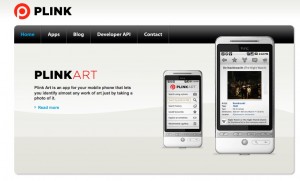According to Good Morning Silicon Valley, Google’s made its first UK acquisition — a visual search startup founded by two Oxford students who developed an Android App that claims to enable you to identify a work of art by snapping it with your phone’s camera. [Grouse: doesn’t work on my T-mobile Pulse — but then nothing involving that wretched device’s camera seems to work. Growl!]
Plink is just four months removed from the public launch of its only product: PlinkArt, an Android app that lets users find out more information about a piece of art just by taking a picture of it. That single app, however, was impressive enough to win the $100,000 top prize in the Education/Reference category in last year’s Android Developer Challenge and it put the company on Google’s shopping list. Plink’s founders, Oxford PhD students Mark Cummins and James Philbin, will have to get acclimated [acclimatised? – ed.] to the sunshine in Santa Monica, where they’ll join the team working on Google Goggles, the company’s in-house visual search app. Said the founders in a blog post, “The visual search engines of today can do some pretty cool things, but they still have a long long way to go. We’re looking forward to helping the Goggles team build a visual search engine that works not just for paintings or book covers, but for everything you see around you.”
New business model: start a company with the aim of being acquired by the Big G. Time was, Microsoft was the desired shopper. How things change.

